A Flavorful Journey: Unraveling the History of Poke Bowls
Poke bowls have taken the culinary world by storm in recent years, becoming a beloved dish appreciated for its fresh ingredients and delightful flavors. While the poke bowl trend seems relatively new, its origins date back centuries. In this blog post, we’ll take you on a fascinating journey through the history of poke bowls, exploring their cultural roots and how they’ve evolved into the trendy and sought-after dish we know today. I used to think that Poke Bowls were from Japan. They seemed to be popular near the Military bases I lived at, and Japanese food is VERY popular at every base I’ve ever lived at. During culinary school I made them for a student lunch one day and Chef Patra inquired, “are you sure these are Japanese? I’ve been to Japan and these are not popular there…”. So I looked it up. Sure enough, Poke bowls do not originate in Japan.
Ancient Beginnings: Hawaii’s Culinary Traditions
Poke, pronounced “poh-kay,” (I always called it Poh-Kee…so now we know) originates from Hawaii, where it has been a fundamental part of the local culinary scene for generations. This does make sense, because there are also military bases in Hawaii. So bringing Hawaiian food to the bases would be a good business plan. I could swear the first time I looked this up in culinary school, I read a story about someone in Hawaii beasically throwing a bunch of leftovers in a bowl and calling it a day (probably a mom…). But I couldn’t find any such story this time around.
The word “poke” in Hawaiian translates to “slice” or “cut,” reflecting the preparation method of the dish. Early Hawaiians used simple ingredients like freshly caught fish, sea salt, and seaweed to create these flavorful bowls, making it a nutritious and delicious option for sustenance. As I’ve learned since I arrived on the island of Okinawa, fresh fish and seaweed are not only tasty, they are amazing for your health and skin. Some even attribute it to the longevity of the Okinawan people.
A Cultural Melting Pot: Japanese Influence on Poke
In the 19th and 20th centuries, Japanese immigrants arrived in Hawaii and brought their culinary expertise, further enriching the island’s cuisine. The Japanese introduced soy sauce, sesame oil, and other seasonings to the traditional poke recipe, infusing new layers of umami and enhancing the flavor profile of the dish. This culinary fusion between Hawaiian and Japanese traditions marked a significant turning point in the evolution of poke bowls. See…I’m not completely crazy! So the modern Poke Bowl has a Japanese influence. And let me tell you, the soy sauce and sesame oil are pretty important in my book.
The Rise of Poke in the Mainland United States
The popularity of poke began to spread beyond the shores of Hawaii in the 1970s as more Hawaiians migrated to the mainland United States. This migration brought the beloved dish to California, where it gained recognition and started to pique the interest of food enthusiasts. Sushi restaurants and poke specialty shops started popping up, introducing mainland Americans to the delectable flavors of poke bowls. Even though I grew up in Southern California, I never saw Poke Bowls until I was an adult. But I grew up in the desert portion and quite frankly we didn’t really trust fish, especially raw unless we took a trip to the beach and ate it straight off the pier.
Modern-Day Poke Bowl Craze
Fast-forward to the 21st century, and poke bowls have become a global sensation, appealing to a diverse range of taste buds. Chefs and home cooks alike have embraced the poke bowl trend, offering innovative variations to suit individual preferences. From vegan and vegetarian options to creative toppings like mango, avocado, and spicy mayo, the possibilities are endless.
Today we are going to do a QUICK and EASY Microwave Poke Bowl. Yep…MICROWAVE Poke Bowl. While many poke bowl recipes require extensive preparation and cooking, we’re here to show you a convenient and time-saving method: making poke bowls in the microwave! With just a few simple steps, you can enjoy a delectable and satisfying meal in no time.
Ingredients:
Microwave ready rice.
I first tried to do this in a microwave rice cooker. It was a HUGE fail. So my sister pointed out…what college student or service member in the barracks is going to want to buy a big bag of rice, buy extra equipment and make it at home? Nobody! So we found these microwave ready bowls of rice. It was only $1.69 at our commissary here on island.
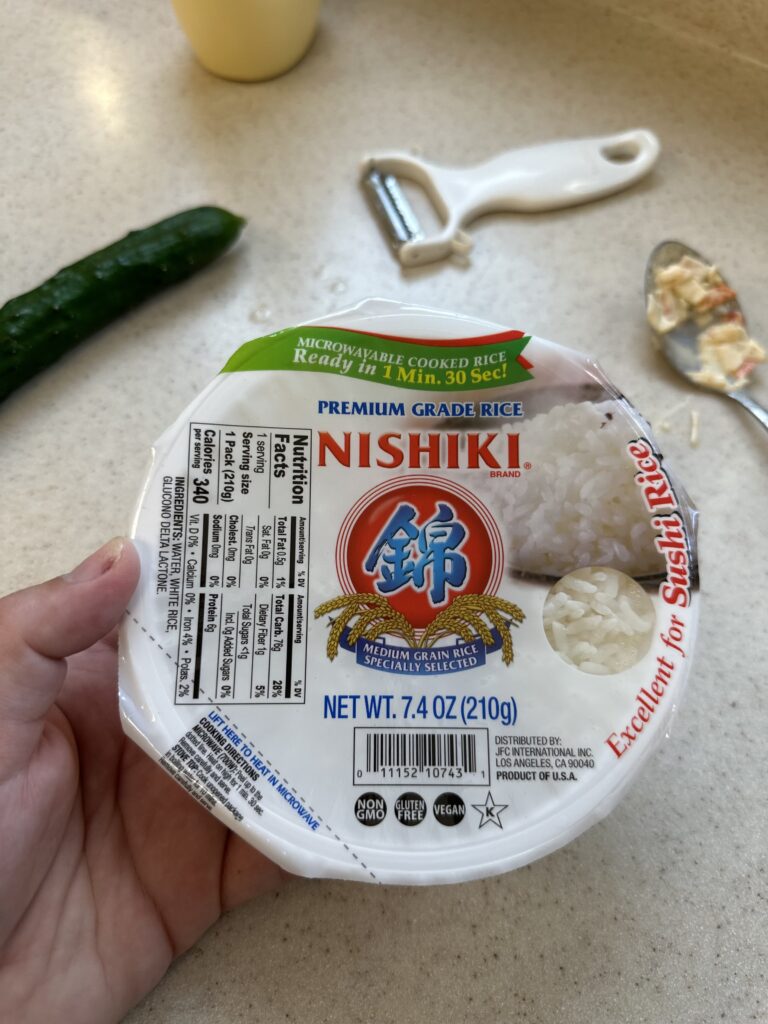
Imitation Crab Meat
I found this container at the grocery store in town for ¥177 or $1.24. You can grab any imitation crab you want. I have also made these using sashimi grade tuna or salmon. But that can be more expensive and difficult to find.
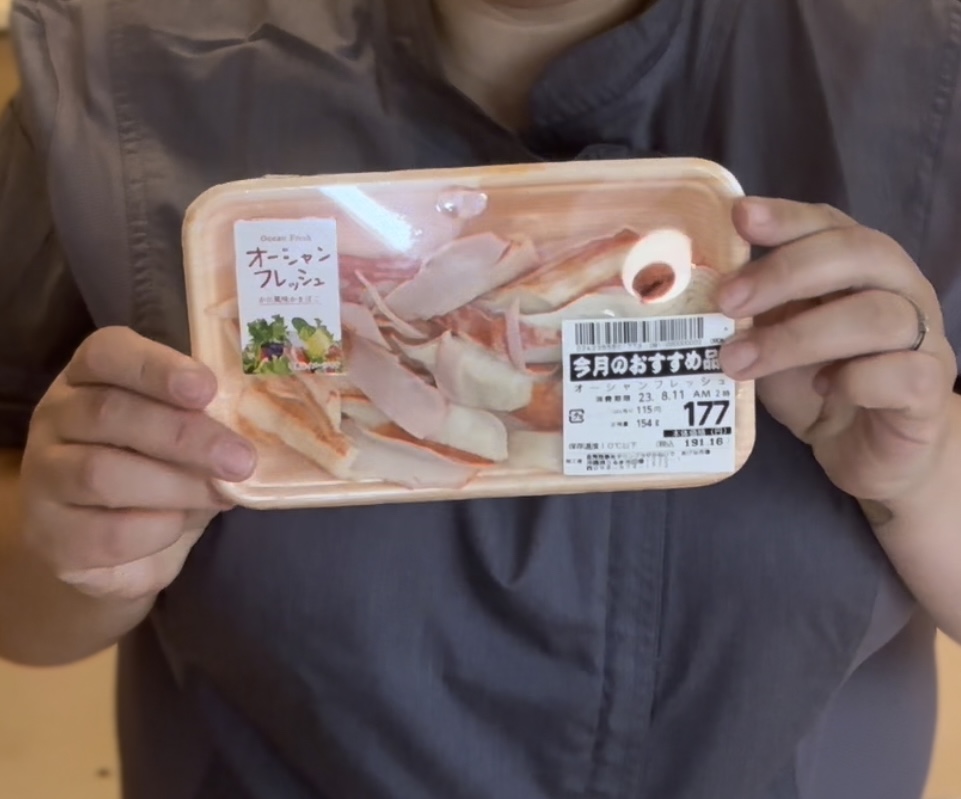
Edamame
This can be found fresh in some places, but even here in Okinawa, I just grabbed a small bag from the freezer section. A 160g bag cost ¥218 or $1.53
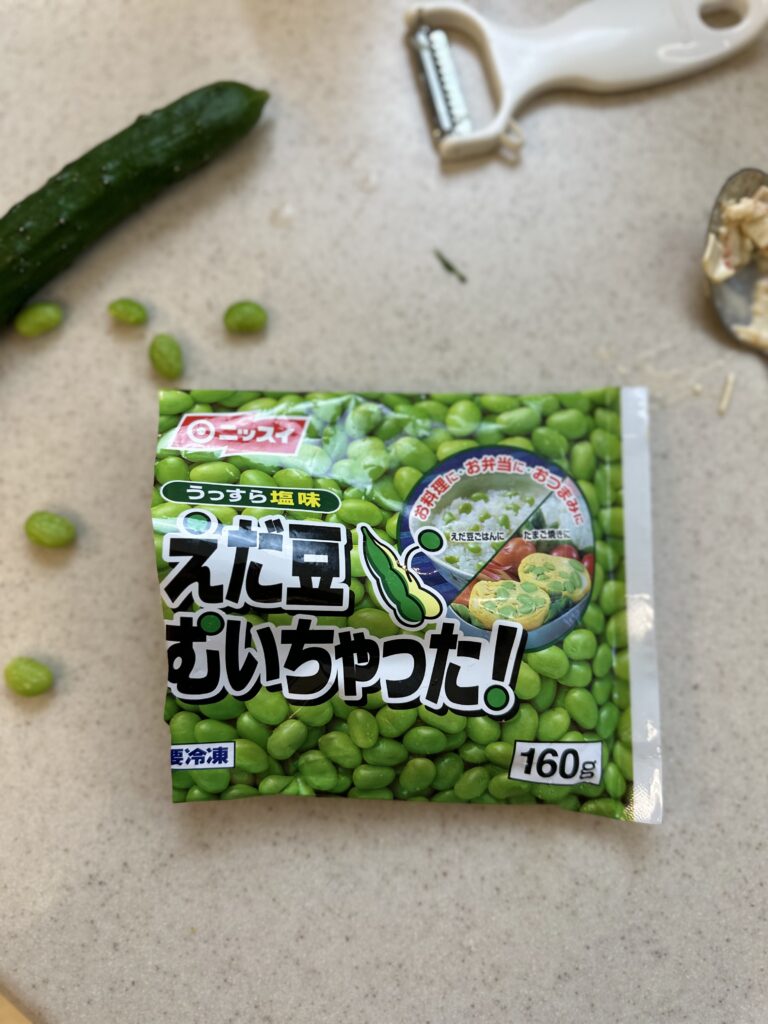
Vegetables
Today I used avocado, cucumber and daikon radish. You can use any vegetable you’d like. I’ve seen some places put lettuce, corn, etc. I didn’t get a picture of them…
Cut all of your veggies and set them aside.
Sesame Seeds and Bread crumbs
I like to add these for the crunchy texture. You can skip these if you like, I just personally like the combination of textures as well as the combination of flavors.
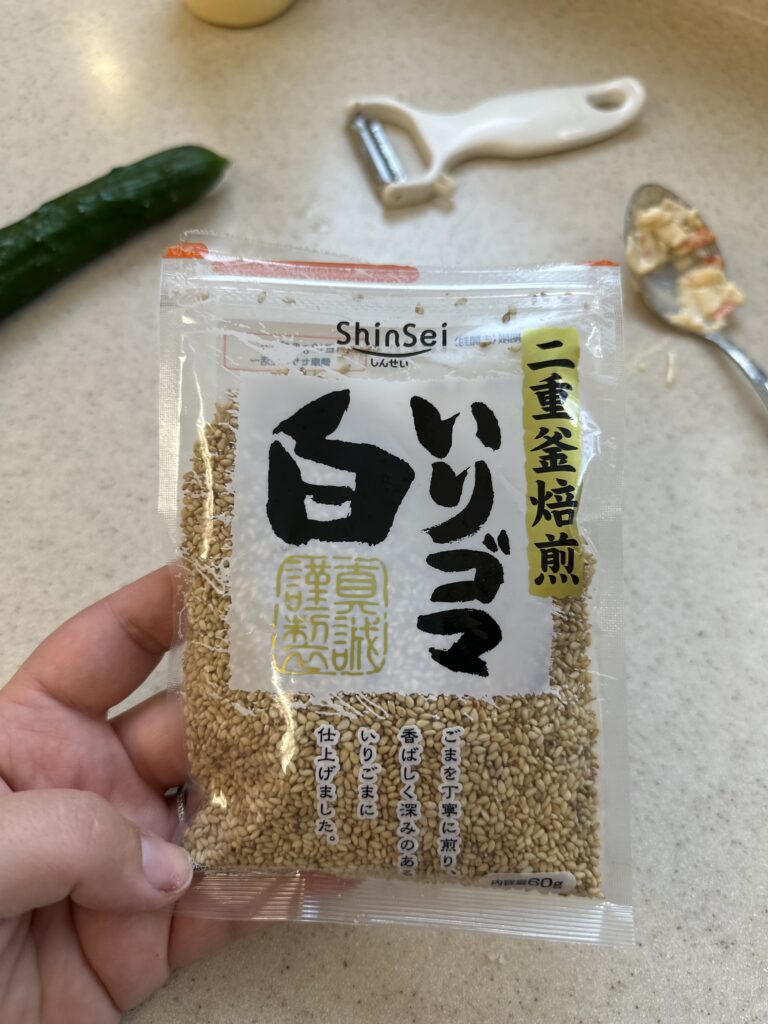
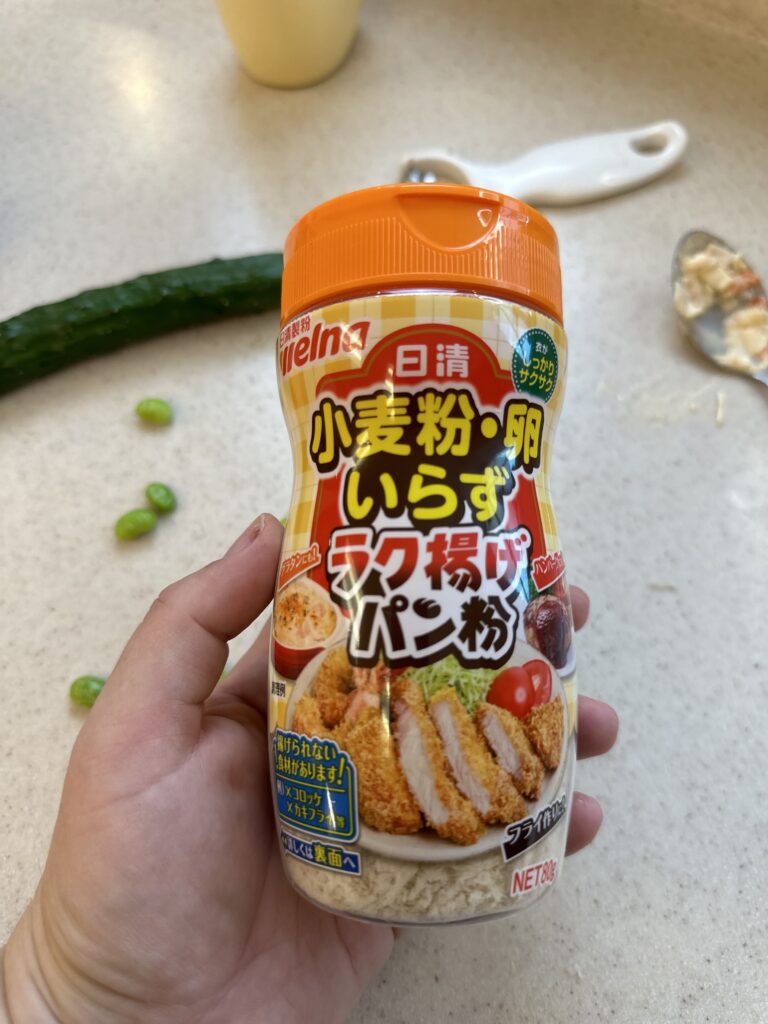
Sauce:
I used some kewpie mayo (found in most Asian markets and some regular groceries) but you can substitute regular mayo. I mixed in a little bit of soy sauce, sesame oil and chili garlic paste. You can also just grab some Yum Yum sauce, sriracha mayo, or just use soy sauce or sriracha.
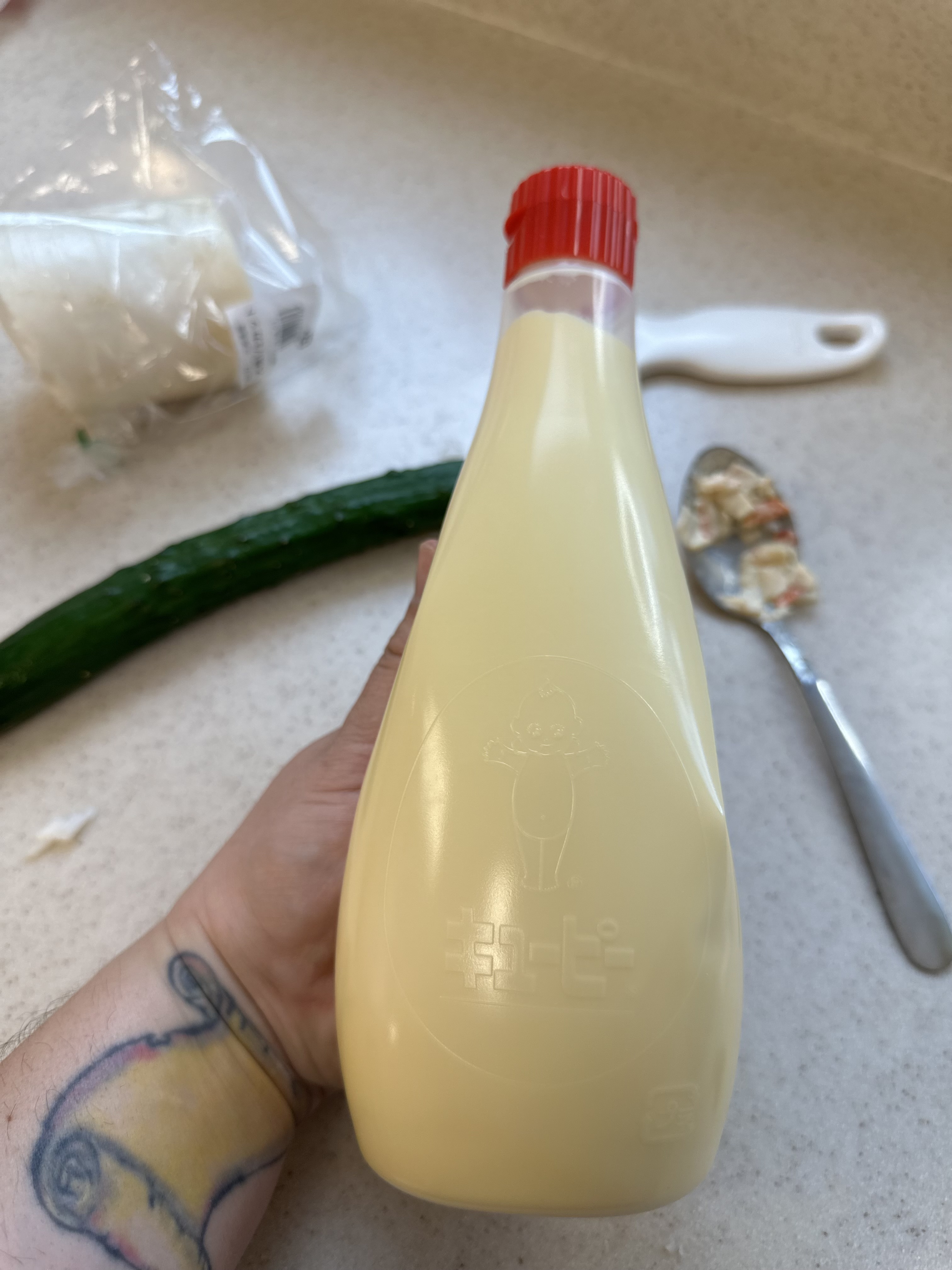
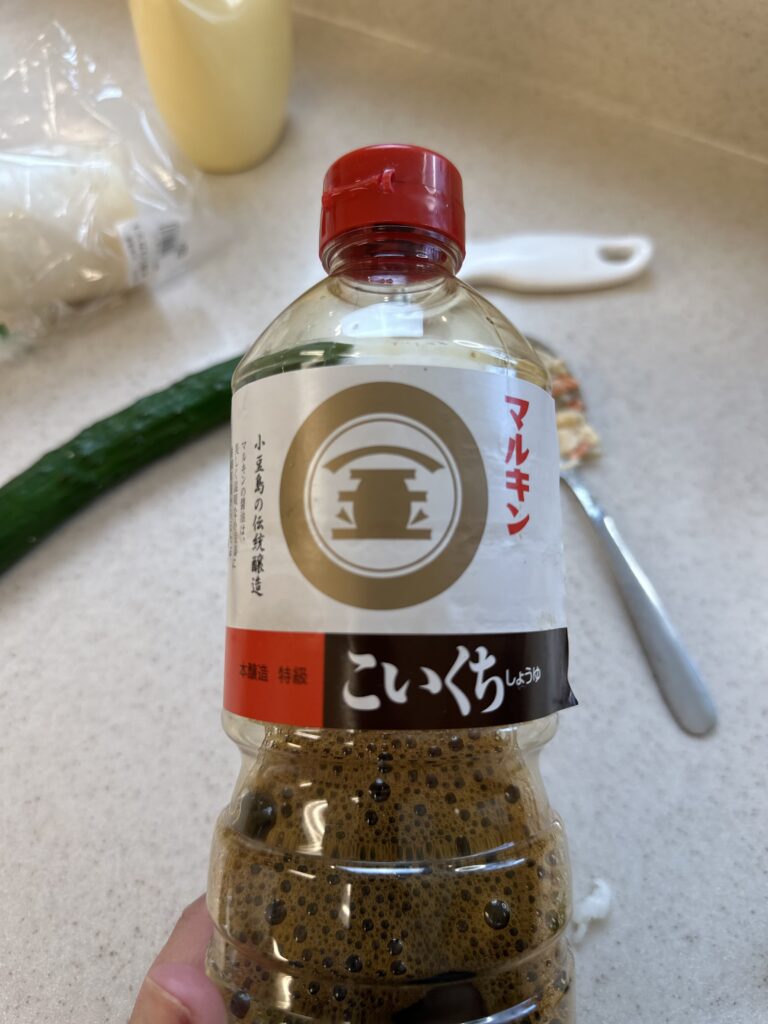
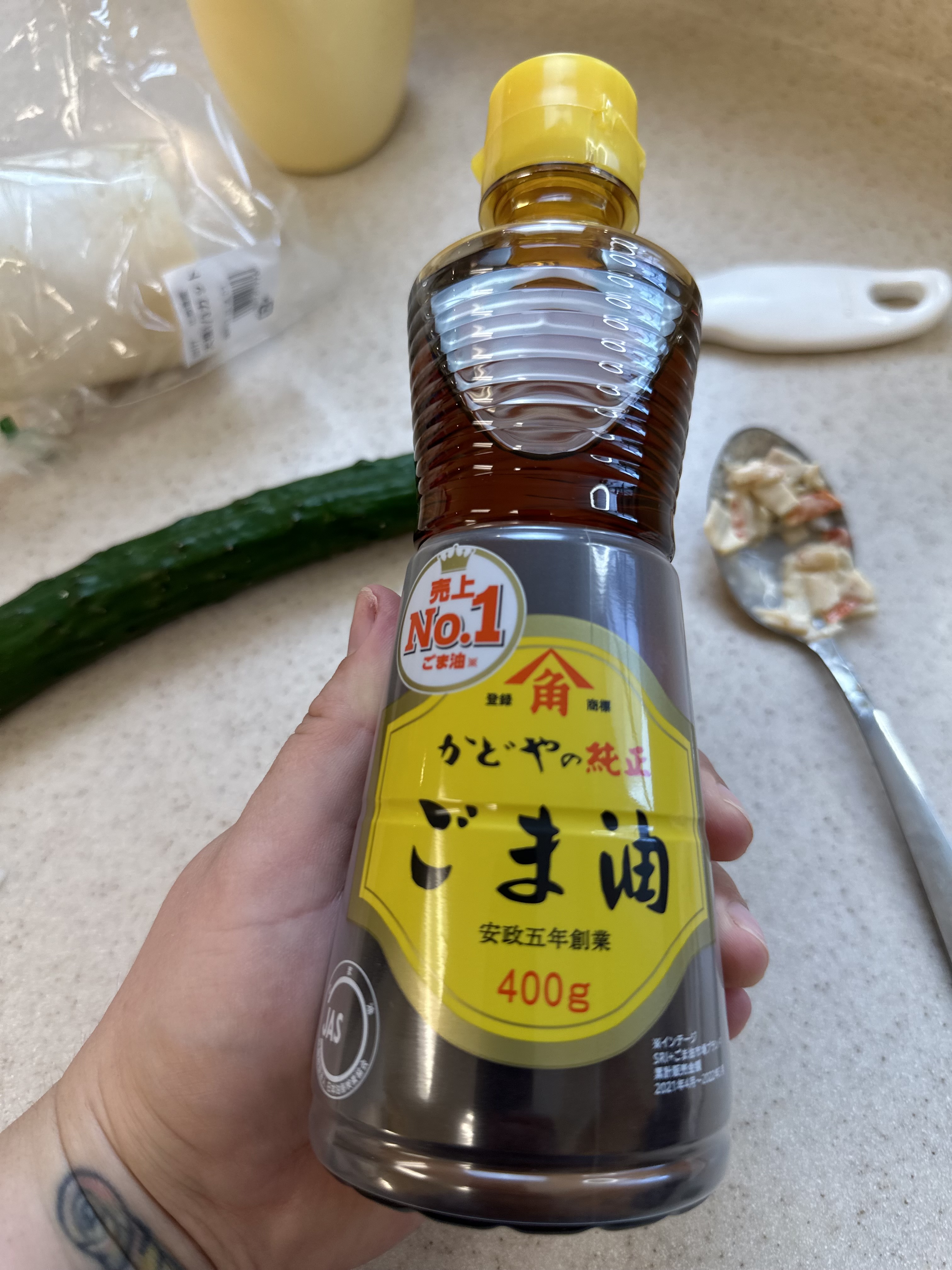
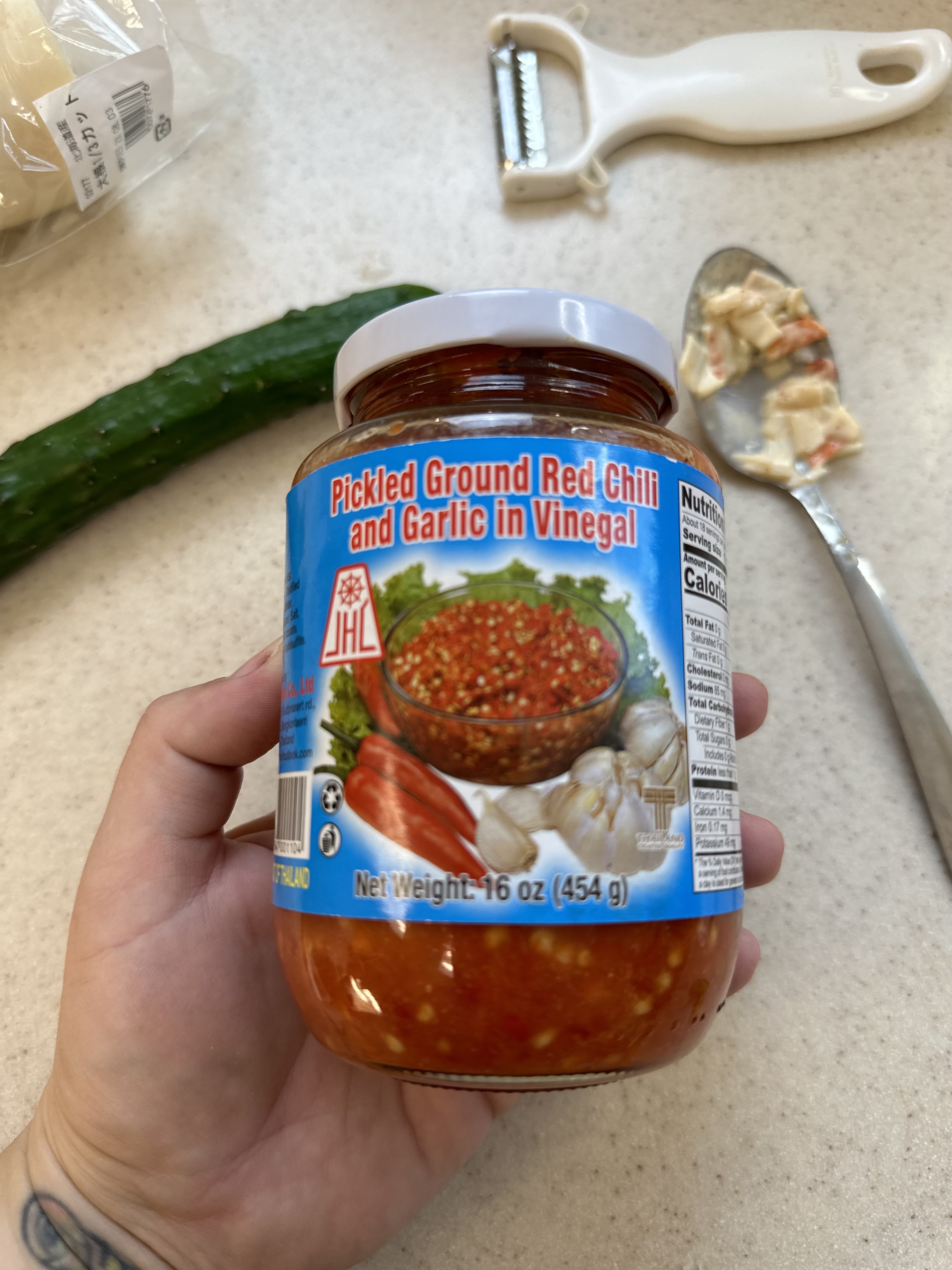
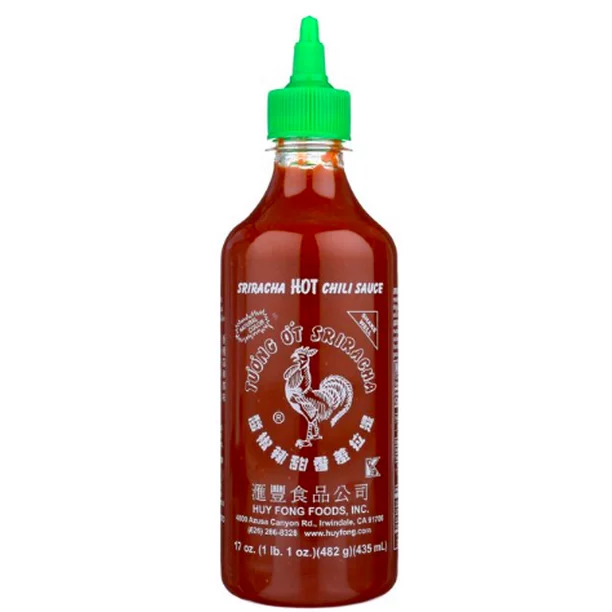

Prepare Ingredients:
Microwave the frozen edamame in a little bit of water in a microwave safe bowl for about 30 seconds to thaw it out and bring it to room temperature. Drain out the water and set aside.
Microwave the rice. This bowl said 1 minute and 30 seconds. Set it aside.
Using a knife or even clean scissors, cut the crab meat into small chunks. Mix in 1 tbs of mayo and 1/4 tsp of chili garlic paste if using. Alternatively you can use Yum Yum sauce, sriracha mayo, plain mayo or nothing at all
Make your sauce:
If you need to make sauce, mix 1 tbs mayo with 1/8 of a tsp of soy sauce, 1/8 tsp sesame oil and 1/8 tsp chili garlic paste.
Assemble!!!
You can leave the rice in the container if you’d like, but I put all of mine in a bowl.
Place rice in the bottom of the bowl and fluff a little.
Place veggies in little piles, put a good scoop of the crab mixture, and a little pile of panko. If you purchased sauce, you can drizzle the sauce over in a pretty zig-zag fashion. If you made it like I did, just put it in an little scoop.
Sprinkle the entire bowl with sesame seeds and viola! Poke Bowl!!!

The history of poke bowls is a tale of cultural exchange and culinary evolution. Originating from ancient Hawaiian traditions, the dish has journeyed through time, influenced by Japanese immigrants, and eventually captivating the hearts of food enthusiasts worldwide. Today, poke bowls continue to evolve, adapting to modern tastes while maintaining their essence—a celebration of fresh ingredients and delightful flavors. Whether you enjoy a traditional Hawaiian-style poke, an adventurous fusion creation, or a super simple microwave bowl, one thing is certain: poke bowls have left an indelible mark on the culinary world, and their popularity is bound to endure for generations to come.
Microwave Poke Bowl
Equipment
- 1 Microwave
Ingredients
- 1 Ea microwave rice bowl or1 – 1 1/2 cups cooked rice
- .25 Cup frozen edamame
- 150 G imitation crab meat
- 1 Tbs kewpie mayo
- 1/8 Tsp chili garlic paste Omit if you do not like spicy heat in your food
- .25 Ea avocado, cubed
- .25 Ea cucumber, sliced, diced or juilliene
- 1-2 Tbs daikon radish julienne or grated Can use regular radish if you wish
- .5 Tsp toasted sesame seeds
- 2 Tbs panko bread crumbs
Sauce
- 1 Tbs kewpie mayo can sub regular mayo
- 1/8 Tsp sesame oil
- 1/8 Tsp soy sauce
- 1/8 Tsp chili garlic paste omit if you do not like spicy heat in your food
Instructions
- Place 1/4 cup of frozen edamame in a microwave safe bowl with just enough water to cover. Microwave for 30 seconds. Drain out the water and set aside
- Cook the rice according to the package directions (my directions said to peel the corner back and microwave for 1 1/2 minutes. Remove from microwave and set aside.
- Using clean scissors or a knife, cut the crab meat into large chunks. Place in a bowl and mix in 1 tbs of kewpie mayo and 1/8 tsp of chili garlic paste.
- Prepare the vegetables you are using by cubing, slicing or dicing them. Set aside.
- If you did not buy Yum Yum sauce, sriracha mayo or other sauce of you liking, mix 1 tbs of kewpie mayo, 1/8 tsp each of sesame oil, soy sauce and chili garlic paste (if using).
- Grab a bowl and place rice into the bottom of the bowl. Fluff the rice a bit. Starting at the top, working clockwise, place each ingredient in a small pile: edamame, 1 scoop crab mixture, avocado, cucumber and daikon. If you have a squeeze bottle of sauce, squeeze the sauce over the entire mixture in a zig-zag pattern. If you do not, simply place a small dollop in the center. Sprinkle the top with panko bread crumbs and toasted sesame seeds.
- Serve immediately! Enjoy!
Leave a Reply